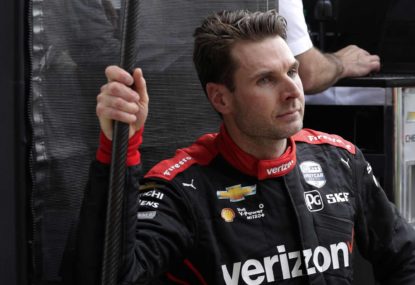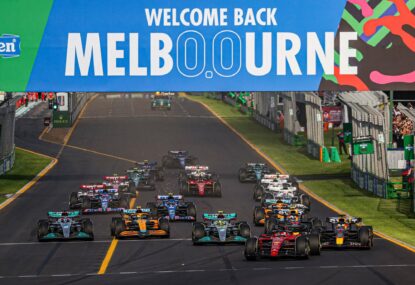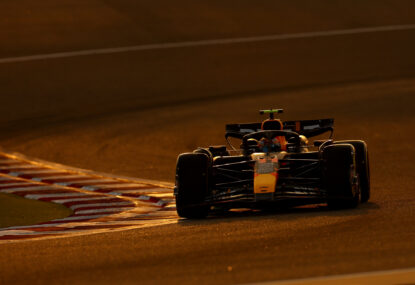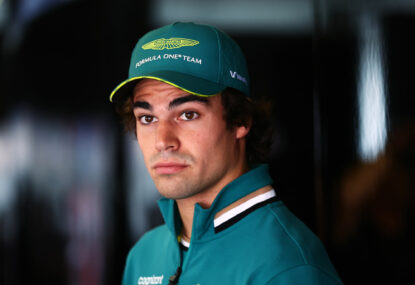That’s the question I asked Force India chief operation officer Otmar Szafnauer, in doing so triggering the beginning of a waltz down memory lane in an attempt to identify where and why Formula One decided to take itself to the contentious space it now occupies.
Force India is Formula One’s midfield bellwether. Its history is one of waxing and waning between feast and famine with entrepreneurs and wealthy car moguls taking their seats at the table before tapping out, having satiated their lust for Formula One racing.
In 2016 it is big enough to have a credible voice in Formula One – literally, as its fifth place finish in the last two seasons have earnt it a seat on the powerful F1 strategy group two years running – but still sufficiently small to feel the financial pinch of running a low-cost team in a big-spending world. It is from a team like this that opinions are most considered given its competitiveness despite a small budget.
With the sport still toing and froing over its strategic technical direction for 2017 – yes, it is April, roughly ten months before next year’s pre-season testing will likely start – Szafnauer gives voice to the competing interests at the rule-making table.
“We’d prefer to continue down the same road,” he says in his Detroiter accent, putting forward that swingeing changes to the rules puts most pressure on small teams without the budget to cope.
“But that’s from a selfish perspective,” he hastens to add. “If we all deem a change to make the cars go faster will help the show, we can’t be selfish.”
And Formula One has indeed deemed such a change necessary. The April 30 deadline for agreement on 2017’s technical regulations will bring to life long-formulated desires for faster and more aggressive-looking cars in a bid to liven the show.
“We’re here for the fans,” Szafnauer says. “If the fans benefit from it, then that’s exactly what we’re going to be doing. We’re changing so the cars will be a bit more competitive … that is what we should be doing, even though it costs us money.”
The phrase “for the fans” is one of those oft-used lines by the sport’s authorities to justify some change or another, and though so many of these changes are bungled, this spirit of rule-making is critical.
Television viewership is down. Grand Prix circuits are falling off the calendar because hosting fees are too expensive and too few people are shelling out for a ticket. The next generations of fans aren’t being inspired by the spectacle of top tier motor racing. Why is that?
“I’m not sure,” Szafnauer admits candidly. “I do not know if that’s Formula One or if that’s what kids are about these days – we’ve got to understand that.
“The first time I went to a Formula One race I was really impressed by the braking performance of the car. I didn’t think it was going to make that first hairpin in Detroit, but they all did. That really impressed me.
“I think kids today need to be impressed that way. I think with road cars being at 700 horsepower now and having good braking performance, we need to make the cars still quicker and more impressive.
“What you need to do is have kids look and say ‘Wow, I can’t do that. These guys are special’. Once that happens, then the drivers are heroes again.
“If you go and watch basketball and look at those guys at a professional level – I can play it, but I can’t do what they’re doing. Racing is the same.”
So we arrive at the contentious matter of regulations designed to make the cars three to five seconds faster in 2017, as is the stated aim of the group writing the rule changes, through a mixture of additional downforce and bigger tyres.
When these changes were made public last year, Williams driver Felipe Massa told this writer he was less than impressed.
“For sure I prefer to drive a faster car,” he started, “but let’s say you put more downforce on every car – you’ll still have one team that did a better job than the other teams, and they’ll have a better car and still be in front. You will see less overtaking – I know how it is to drive a car with more downforce.”
The likes of world champion Lewis Hamilton, Nico Rosberg and Toto Wolff have all hit out at the rules to increase downforce since then, among others.
Szafnauer, however, remains steadfast.
“It’s definitely a step in the right direction. It’s what we should be doing,” he says firmly, refusing to entertain debate. His mind is made up – and so, it seems, are those of the three levels of rule-makers, who are expected to wave these changes through in a matter of weeks.
The issue remains as divisive as the body making the gamble, but at very least Szafnauer gives us a glimmer of hope that when the decision is finally called it will truly be with the innocent, wide-eyed fan in being in awe of the spectacle – with keeping the cars cool – in mind.
Fingers crossed, anyway.
Follow @MichaelLamonato on Twitter during the #ChineseGP weekend.




































































































